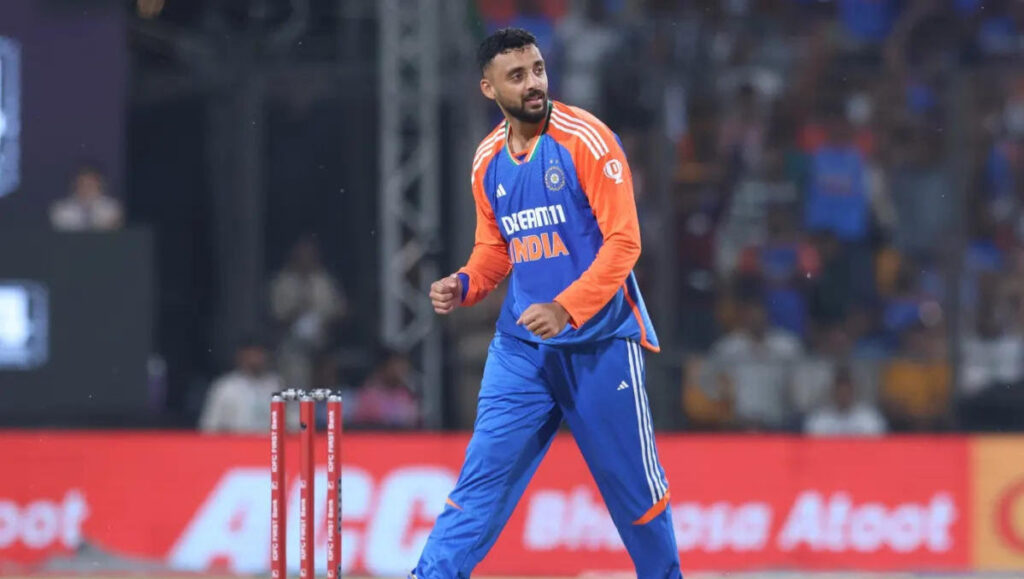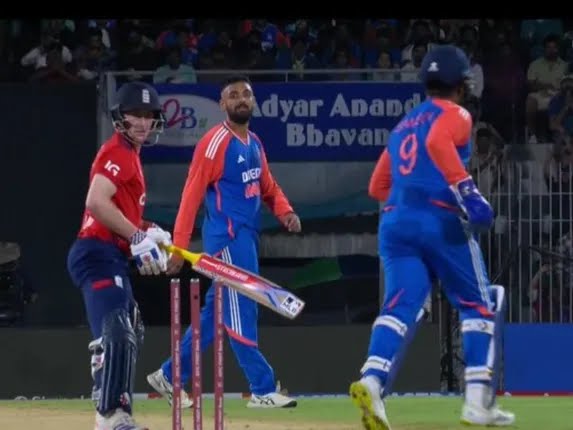
Although England fired in fits and starts, eventually, India emerged victorious in the five-match T20I series, taking an unassailable 3-1 lead with a hard-fought win in Pune. So, what were the hits and misses in relation to the home team? Who were some of the star performers for the home side? And what are the areas of concern? Here’s a lowdown on India’s series win.
Hits:
Varun Chakaravarthy bamboozling the English batters:
Varun was here, Varun was there, and Varun was everywhere—that is how the English batters might be feeling after getting befuddled time and again by the mainstay of the Indian attack. He has 12 wickets at an astonishing average of 9.41. His economy rate of 7.06 also makes for good reading.
This is basically Varun 3.0, where his bowling isn’t just restricted to variations. His control has improved significantly—more often than not, he is landing his deliveries on a good length spot and hitting higher up on the sticker of the bat. He hardly gives any room for the batters to free their arms. Alongside overspin, Varun has also been looking to impart a little more side-spin. His ability to vary the pace and make subtle changes in lines and lengths has also been on display.
Hardik Pandya’s all-round show: Hardik’s contribution to the side can be seen by the fact that he has taken five wickets at an average of just under 19 in the T20I rubber. He was also a cornerstone of India’s victory in Pune, cracking a blazing fifty. It was his partnership with Shivam Dube that laid the platform for India’s recovery. Hardik’s no-look, lofted shot while facing Jofra Archer encapsulated the essence of his pyrotechnics further.
The ever-reliable Axar Patel and the surprise weapon: Axar might not do a great deal with the ball, but he reaps the rewards for keeping it simple. The left-arm spinner has bagged six wickets at an average of 16.5 in the series. His overall T20 record also backs the assertion that he is a fine utility cricketer: 239 wickets at an economy rate of just over 7. He also showcased his prowess with the bat in the T20 World Cup final in Barbados.
Harshit Rana turned out to be India’s game-changer in the crucial fourth T20I. The pacer employed hit-the-deck skills, alongside pace and variations, to bag three wickets. Rana being used as a concussion substitute for Dube will always come under scrutiny. But there is no doubt that he has the potential to be a wicket-taker across formats.
Arshdeep Singh making incisions in the first over in the opening two games was also instrumental in India coming out on top.

Misses:
Suryakumar Yadav continues to struggle with the willow: Ever since taking over as the T20I skipper, Suryakumar’s form has nosedived. Especially over the last couple of series India have played, he has aggregated a mere 52 runs in eight matches. At times, it feels as if the hard length is rushing him a bit. The think tank would hope that age isn’t catching up with one of India’s bedrocks in the shortest format.
Sanju Samson and miscued pulls: Jofra Archer (thrice) and Saqib Mahmood (once) have been successful in dismissing Samson with the short/short-of-a-length ball. The right-hand batter doesn’t always go back and across while playing the pull, or rather he likes to pull on the front foot. Somewhere, the extra lift, especially from Archer, seems to be troubling him a touch.
What to make of Abhishek Sharma?
The right-hand batter is the highest run-getter in the series so far, with 144 runs to his name. There is a school of thought that he throws his wicket away too often. However, that point can be negated by the fact that the Powerplay is an important factor in the shortest version of the game. And Abhishek’s high-risk approach is set to help in India’s endeavor to make full Use of the first six overs.



